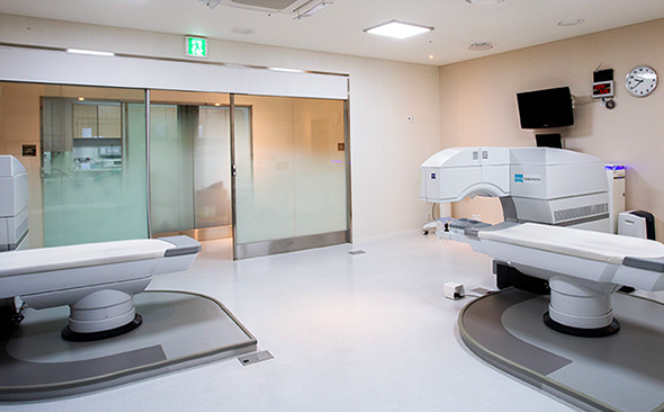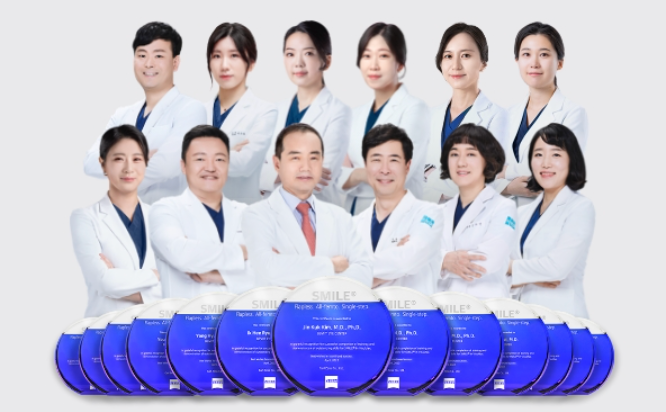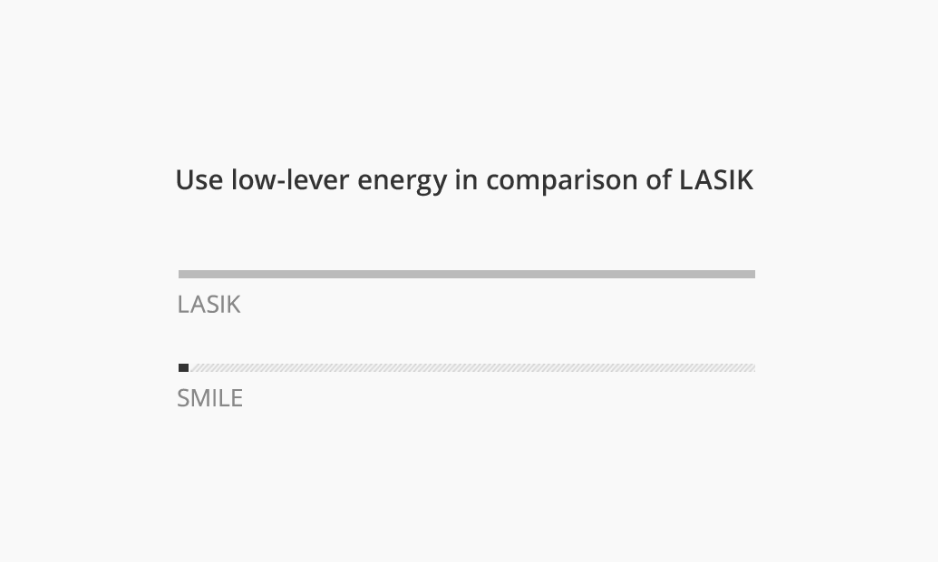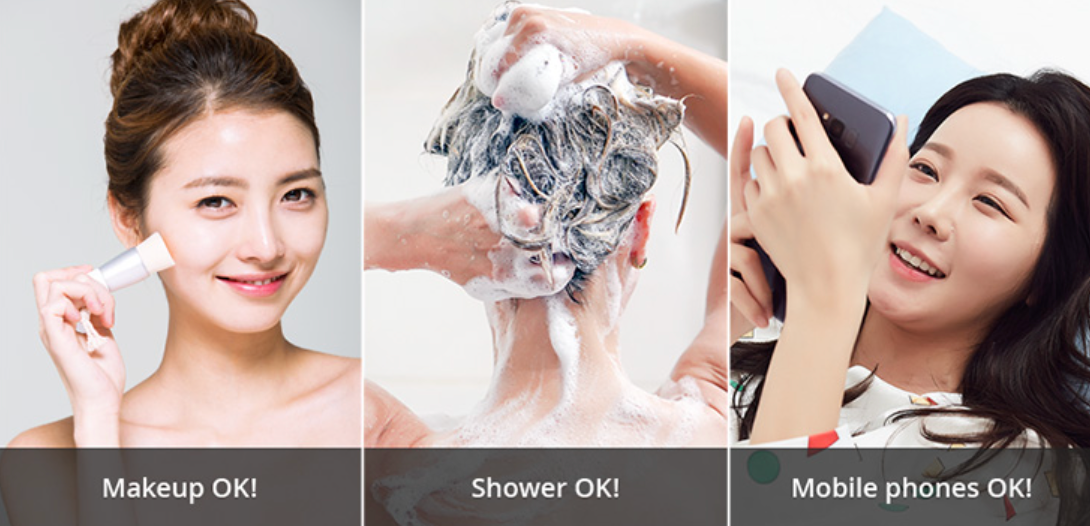SMILE in Seoul Korea
No corneal flap. Greater precision. Fast recovery.
A new standard in vision correction beyond LASIK and LASEK.
SMILE (Small Incision Lenticule Extraction) is an advanced laser eye surgery that corrects vision by using a laser to create a precise lenticule within the cornea, which is then removed through a micro-incision of about 2mm. This technique restores vision without creating a corneal flap, offering a safer and less invasive alternative to traditional LASIK or LASEK.
There are two types of SMILE procedures: SMILE and SMILE Pro. Unlike previous methods, SMILE directly targets the corneal stroma using a femtosecond laser, resulting in minimal disruption to the eye’s structure.
Developed by ZEISS in Germany, SMILE is exclusively performed using the VisuMax laser system and has been FDA-approved for its safety and effectiveness.
- 1. Small incision up to 2.5mm made by a femtosecond laser.
- 2. Laser creates a thin lenticule inside the cornea.
- 3. Surgeon removes the lenticule through the incision to change the shape of the cornea.
Experience the True SMILE surgery - Powered by ZEISS
B&VIIT is an officially certified SMILE Surgery Center in Korea, recognized by ZEISS.

Fully equipped with New VisuMax operating room exclusively for SMILE.
Selected as an only SMILE Center of Excellence in Korea and designated a Premium SMILE Center for the first time!

Constant temperature and humidity,
sterilization and HEPA filter system provide the optimal surgical environment for stable surgical results and good condition of clients.

B&VIIT ophthalmologists are the specialists certified as SMILE doctors with experience of performing a minimum of approximately 100,000 cases of vision correction surgery.
Discover why everyone is talking about SMILE -
Experience the difference for yourself.

- Uses low-lever energy
- Quicker vision restoration
- Enhanced vision quality
If the laser energy level is high, gas bubbles will be formed in the cornea, thereby resulting in a roughened corneal cut surface. Smile uses low-level energy which is about 600 times lower than that of ordinary LASIK to generate a smoothly cut corneal surface, thereby resulting in quick restoration and higher quality of vision.

Minimization of
pain and downtime
There is almost no redness and pain in the eyes on the day of surgery and you can resume your normal daily activities from the next day of surgery since the corneal epithelium is not removed.
Which vision correction surgery is appropriate for me?
| SMILE | LASIK | LASEK (PRK) | Phakic IOL | |
|---|---|---|---|---|
| Advanced | 💙SMILE Pro - 4X faster than previous versions - Surgery time within 10 seconds |
💙PersonalEYES LASIK - Precise correction, even for high-order aberrations - Reduces glare and residual astigmatism |
💙PersonalEYES LASEK - Precise correction, even for high-order aberrations - Reduces glare and residual astigmatism |
💙Viva ICL - Corrects both presbyopia and myopia - Uses EDOF (Extended Depth of Focus) technology |
| Basic | SMILE | LASIK | LASEK (PRK) | Available for myopia and astigmatism |
| Method | No flap, minimally invasive | Flap creation followed by laser correction | Epithelium removed before laser correction | A 2–3mm incision is made at the edge of the cornea to insert a custom lens behind the iris |
| Characteristics | High safety and fast recovery | Less pain and fast recovery | Resistant to external impact | No corneal tissue removal Safe for high prescriptions and thin corneas Minimizes risks of glare, dry eyes, and myopia regression The lens is removable and replaceable |
| Best for | · Those who want quick recovery · Those with dry eyes · Those needing correction for myopia or astigmatism |
· Those who cannot take long breaks from work · Those sensitive to pain · Those needing astigmatism correction · Corneal thickness over 500μm |
· Those with very thin corneas or very small eyes · Those with severe dry eyes · Those engaged in activities that impact the eyes |
· Those who cannot undergo laser eye surgery due to ultra-high myopia or astigmatism · Those with very thin corneas · Those with great fear of surgery |
| Postoperative Care | - | Avoid any impact or pressure on the eyes right after surgery | Requires 3–6 months of care | Requires regular check-up and caution to prevent impact |
| Postoperative Check-ups | Day after surgery, 1 month, 6 months, 1 year postop | Same schedule | Day after surgery, 4 days postop, and long-term care for 3–6 months | Every week for 1 month, and regular check-up required |
| Pain and Downtime | · Minimal discomfort · Return to daily life by next day |
· Minimal discomfort · Return to daily life by next day |
· Mild discomfort · Recovery period of 3–4 days |
· Very little pain · Recovery by the next day |









